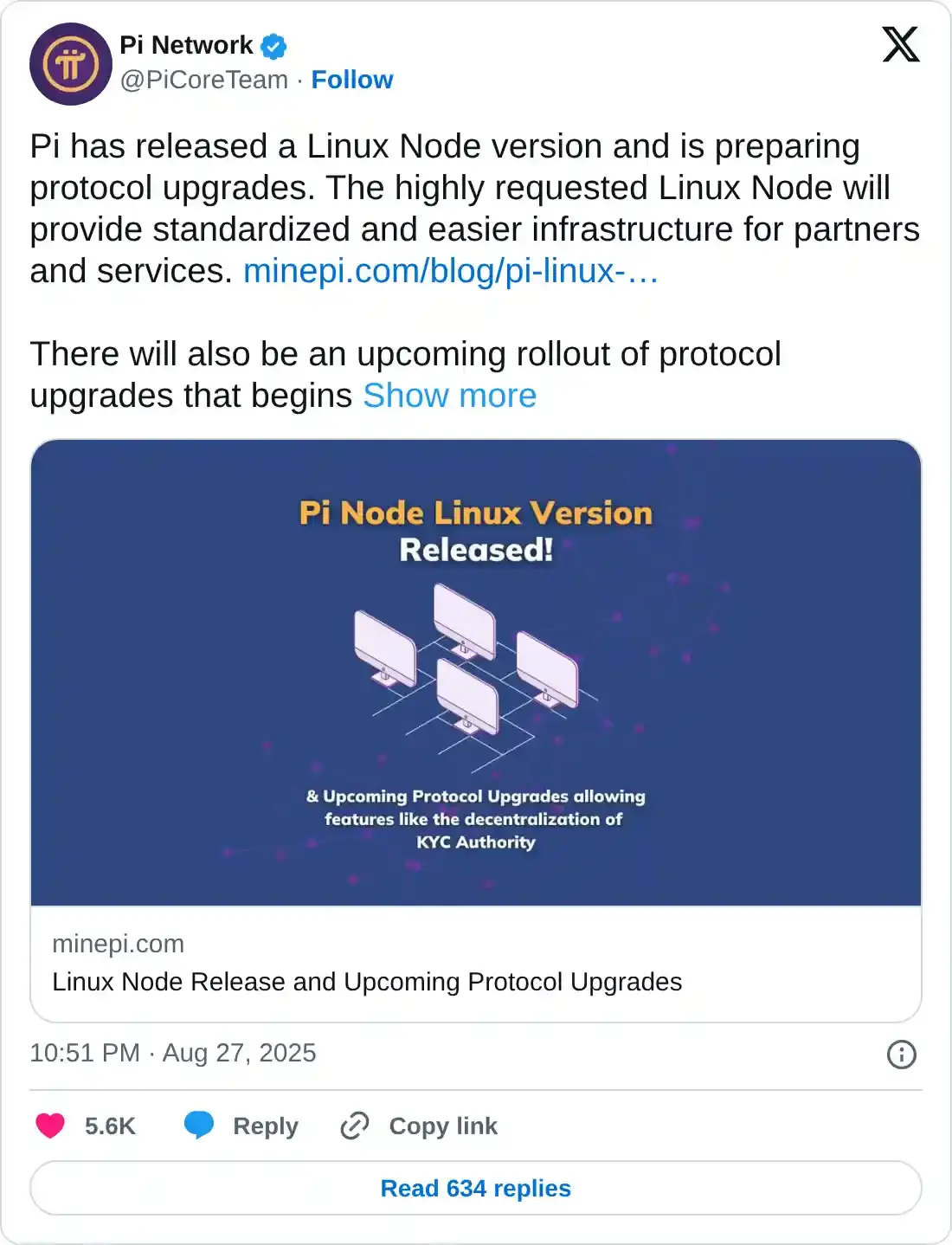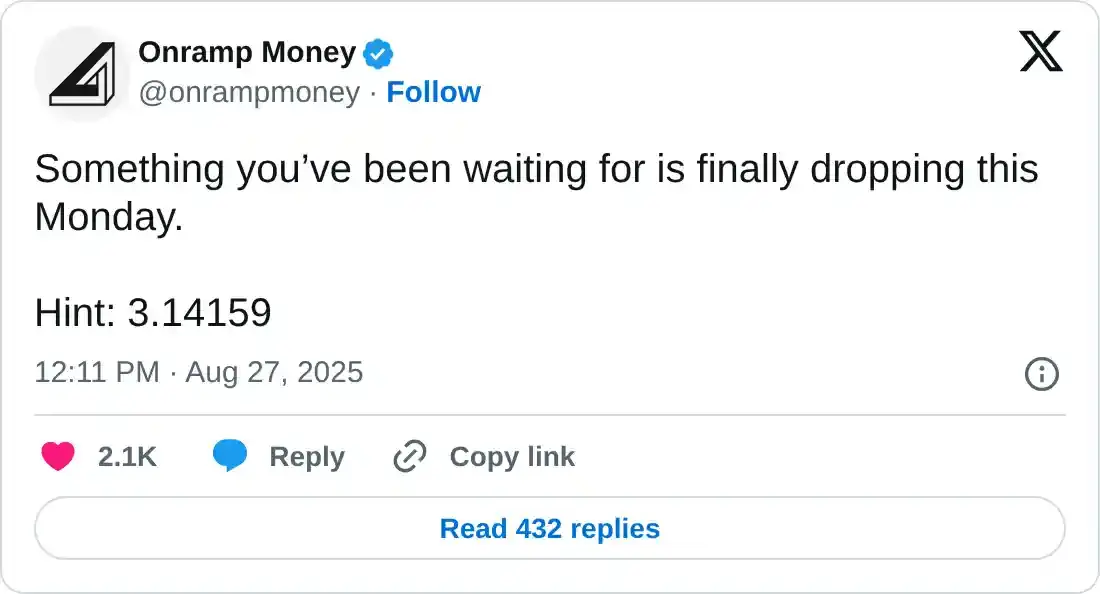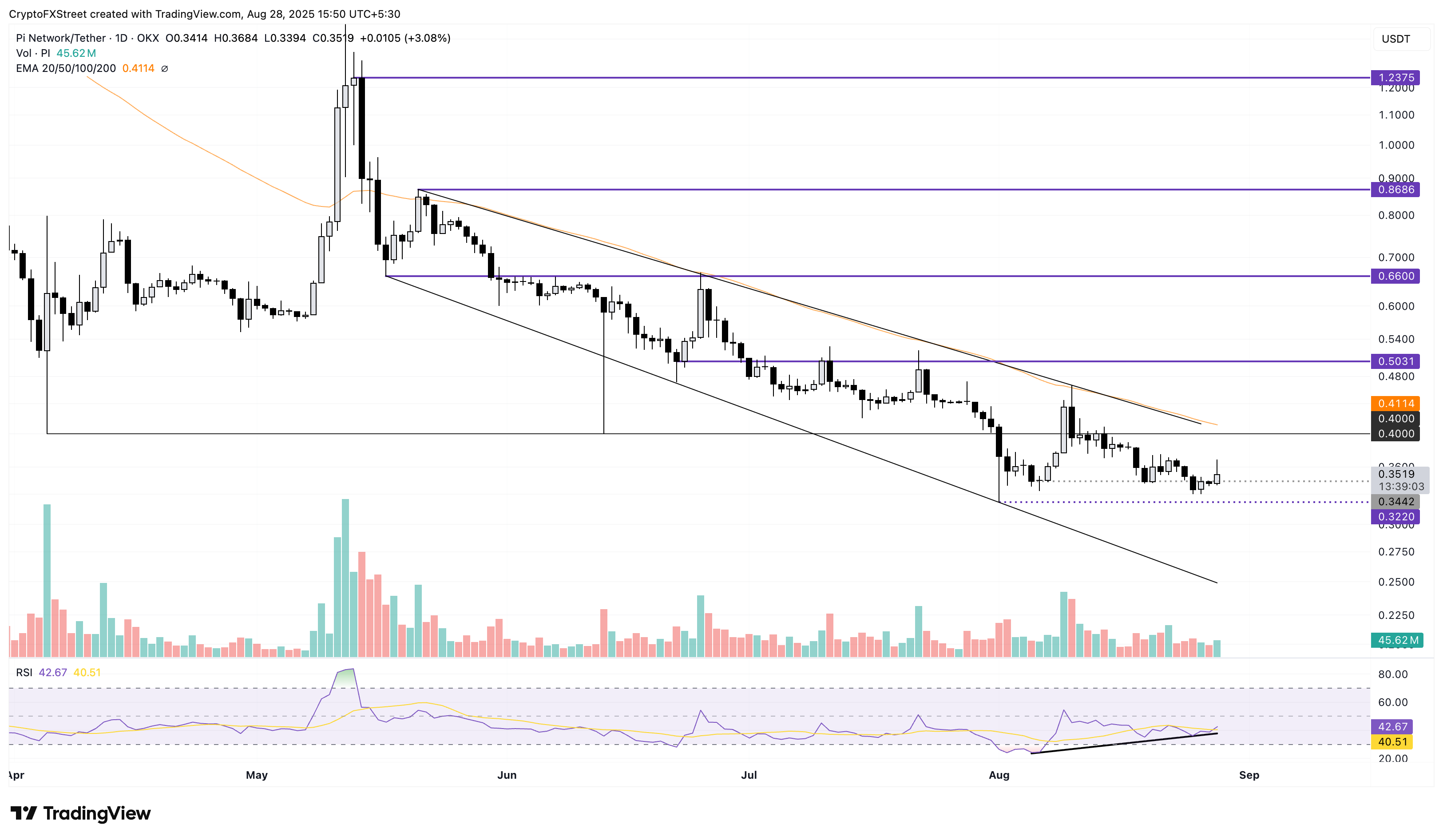Pi Network Price Surge Imminent: Mainnet Launch Accelerates with Linux Release from Core Team
Pi Network just dropped a Linux client—and the Mainnet countdown just got real.
Development Milestone Reached
The Pi Core Team's Linux release isn't just a technical flex—it’s a signal. Mainnet activation isn't looming; it's knocking. And the market's starting to lean in.
Why Linux Matters
Linux support broadens node accessibility, strengthens network decentralization, and invites a wave of tech-savvy validators. More nodes, more security, more hype. Classic crypto math.
Price Speculation Heats Up
Traders are circling. Every Mainnet update fuels another round of speculation—because nothing excites the market like a coin that hasn't truly traded yet. It’s the ultimate 'what if' scenario.
Timing Is Everything
The team’s rolling out infrastructure updates with calculated precision. Each move feels staged—or strategic, depending on your level of cynicism. Either way, momentum's building.
Bottom Line
Mainnet's closer than ever. The Linux build proves the network’s hardening for real-world use. But until those coins hit open markets, it’s all promise and no portfolio change—ah, the classic crypto tease.
Pi core team drops Linux upgrade ahead of smart contracts bundled with protocol 23 release
Pi Node, a desktop software that serves as a single-entity node in the PI Network, has expanded its support to include Linux, in addition to Windows and macOS. This release to a new operating system (OS) will receive two testnet rollouts, followed by the mainnet release in the upcoming weeks.
The Core team has expressed concerns about potential network outages during the upcoming rollouts, which will be announced in advance.
Similar to other OS versions, this release will receive embedded Know Your Customer (KYC) authority with the upcoming upgrades, ensuring the Pi Network remains a KYC-verified blockchain. With the Pi Node stepping into the Linux ecosystem, the network is inching closer to mainnet activation, which will enable pioneers to deposit verified PI balances and fully kickstart the Pi ecosystem.
To boost the Pi ecosystem with smart contract functionality, the Pi Network will utilize the upcoming stellar protocol version 23. On the Stellar Mainnet, voting will be conducted on September 3, as previously reported by FXStreet.

It is worth mentioning that Onramp Money has hinted at a potential Pi Network integration on September 1. The hints mention “3.14159,” which are the initial six digits of Pi. In parallel to the Linux drop, the hint from Onramp Money fuels the anticipation of Mainnet activation.

Pi Network eyes extended recovery to the 50-day EMA
Pi Network trades at $0.3519, appreciating over 3% on the day as it bounces off from above the $0.3220 low from August 1. The intraday recovery signals a potential upcycle within a larger falling channel pattern formed on the daily chart.
The recovery run could target the upper ceiling of the chart pattern, moving alongside the 50-day Exponential Moving Average (EMA) at $0.4120, as the Relative Strength Index (RSI) reads 47 on the same chart, pointing towards the halfway line as buying pressure rejuvenates.
Furthermore, the uptrend in RSI marks a bullish divergence with the PI token price action.

PI/USDT daily price chart.
Looking down, if PI loses the ground covered by the intraday recovery, it could test the all-time low of $0.3220, reached on August 1. In such a case, a potential spike in supply pressure could trigger a flash of the $0.3000 psychological support on the bearish radar.
Cryptocurrency metrics FAQs
What is circulating supply?
The developer or creator of each cryptocurrency decides on the total number of tokens that can be minted or issued. Only a certain number of these assets can be minted by mining, staking or other mechanisms. This is defined by the algorithm of the underlying blockchain technology. On the other hand, circulating supply can also be decreased via actions such as burning tokens, or mistakenly sending assets to addresses of other incompatible blockchains.
What is market capitalization?
Market capitalization is the result of multiplying the circulating supply of a certain asset by the asset’s current market value.
What is trading volume?
Trading volume refers to the total number of tokens for a specific asset that has been transacted or exchanged between buyers and sellers within set trading hours, for example, 24 hours. It is used to gauge market sentiment, this metric combines all volumes on centralized exchanges and decentralized exchanges. Increasing trading volume often denotes the demand for a certain asset as more people are buying and selling the cryptocurrency.
What is the funding rate?
Funding rates are a concept designed to encourage traders to take positions and ensure perpetual contract prices match spot markets. It defines a mechanism by exchanges to ensure that future prices and index prices periodic payments regularly converge. When the funding rate is positive, the price of the perpetual contract is higher than the mark price. This means traders who are bullish and have opened long positions pay traders who are in short positions. On the other hand, a negative funding rate means perpetual prices are below the mark price, and hence traders with short positions pay traders who have opened long positions.

